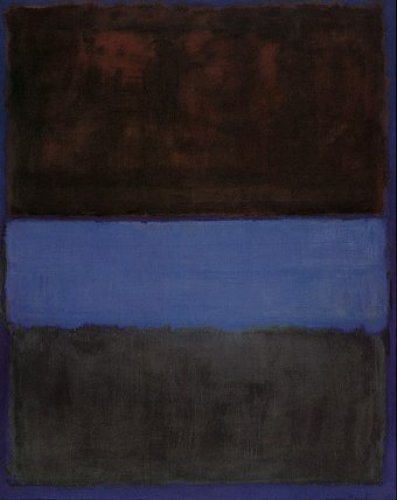No. 61 (Brown Blue Brown on Blue), 1953
The No. 61 (Brown Blue Brown on Blue) is a painting by the Russian-American expressionist artist known as Mark Rothko. Same with other works of Rothko from this time, No. 61 is made up of large spreads of colour outlined by rough, misty shades. The painting also uses coated colouring to enhance the hues, a quality that Mark described as "inner light". The artist painted it in a way that sometimes the painting can be seen flowing upside across the surface. This illusion can be noticed in No. 61 because Rothko overturned the painting toward the last steps of his work.
Mark used the phrase 'inner light' to explain his approach to colour in his artwork. There was a lot of carefulness around the rectangles in his pieces and the mixture of tones that went into every interaction he made in this painting. The painting really features many layers of oils that were to add a glowing effect to the key parts of the artwork. All the details were well thought of in this painting just by looking at it.
The painting is alleged to have initially been put on display at the Modern Art Museum in 1961, even though there is little evidence that it was incorporated in a smaller location (probably the Janis Gallery, in New York) in 1955, in its original title of just, Rust and Blue. The painting has since been displayed in exhibitions across the globe and mostly in Los Angeles. Its size is 115cm tall by 92cm wide, and it is listed as being complete of oil on canvas, although it is likely that Mark used egg elements in his work. On the reverse of the painting is dated and signed by the artist himself at the top of the right corner. The painting has been well-known as Brown, Blue, and Brown on Blue.
This lovely version of Mark’s colour series can be found at the Museum of Contemporary Art, Los Angeles, where they are usually on display. However, check-in in advance if you are particularly visiting so as to see the No. 61 (Rust and Blue) personally. The worldwide fame gained by the artist has guaranteed that his work is now circulated all over the globe, in various private collections as well as public institutions. The artist’s native US still embrace most of his work, and there has been an increasing interest outside of the conventional markets of Europe and North America that has increased the appraisal of his paintings significantly.

